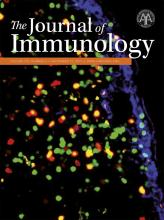 Two journals have retracted papers by a biologist who was recently found guilty of misconduct by his former employer, the University of Colorado Denver, bringing the total to five.
Two journals have retracted papers by a biologist who was recently found guilty of misconduct by his former employer, the University of Colorado Denver, bringing the total to five.
The investigation report by UC Denver, which we obtained earlier this year via a public records request, had recommended one of the two newest retractions, which appears in the journal Hepatology. The other retraction, in the Journal of Immunology, was not flagged by the report — which found, among other conclusions, that Almut Grenz had altered multiple values in research that had already been submitted for peer review.
Here’s the notice for the Journal of Immunology paper:
We recently became aware of some potentially inappropriate duplication of histologic images and Western blots in our research paper (in Fig. 1B, actin bands are possibly duplicated as CD73 bands; in Fig. 2E, the left column lower and upper images are possibly duplicated and the lower right image appears to be the same as the lower right image of Fig. 5E; and some lanes in the Western blots in Figs. 3B and 6A are potentially spliced without appropriate indication). We were not able to provide the original data for these figures, and thus they cannot be validated. Based on these concerns, all authors, with the exception of Dr. Almut Grenz, have agreed that we would like to retract this research paper. We deeply apologize to our colleagues and the scientific community for any inconvenience this may have caused.
“Hypoxia-Inducible Factor-1α–Dependent Protection from Intestinal Ischemia/Reperfusion Injury Involves Ecto-5′-Nucleotidase (CD73) and the A2B Adenosine Receptor” has been cited 81 times since it was published in 2011, according to Clarivate Analytics’ Web of Science. Grenz is the second author.
We have contacted the journal to ask what prompted them to investigate this paper, since it wasn’t flagged by the investigation report. Editor Pamela Fink told us:
The article was retracted at the request of the authors listed in the retraction (all authors, with the exception of Dr. Grenz).
Earlier this year, a spokesperson told us Grenz — the only person confirmed by the investigation to have committed misconduct — was no longer affiliated with the University of Colorado Denver. We have been unable to find contact information for Grenz.
The report concluded that additional papers by the last author on the JCI paper, Holger Eltzschig, were also found to contain issues that were the result of “error,” not misconduct. Eltzschig has published more than 160 articles. In 2016, he left Denver for the McGovern Medical School (part of The University of Texas Health Science Center at Houston), where he became the first to hold a McGovern chair position.
Here’s the notice for the Hepatology retraction, which is paywalled (and cites the report we obtained):
The above article, published online on October 30, 2013, in Wiley Online Library (wileyonlinelibrary.com), has been retracted by agreement among the authors, the journal’s Editor in Chief, David Cohen, the American Association for the Study of Liver Diseases, and Wiley Periodicals, Inc. The retraction has been agreed due to the inappropriate duplication of several histological images in the article. The images affected were Fig. 3D, Fig. 4C, Fig. 5C, Fig. 6B, and Fig. 6F. In addition, errors involving the use of standard deviation versus standard error of the mean were made in some of the figures. Complete details of the investigation can be found in the U.S. Office of Research Integrity’s report, accessible at https://retractionwatch.com/wp-content/uploads/2017/06/Investigative-Report_1.pdf. There were no findings of culpable research misconduct made against any of the authors in relation to this article. The authors apologize to our colleagues and the scientific community for any inconvenience this might have caused.
“Equilibrative nucleoside transporter (ENT)-1-dependent elevation of extracellular adenosine protects the liver during ischemia and reperfusion” has been cited 16 times since it was published in 2013. Grenz and Eltzschig are co-corresponding authors.
The university launched a full investigation in February 2014, concluding that multiple papers contained 36 duplicated histology images. But during the investigations, they discovered additional problems:
The respondents revised many figure panels with altered data that changed mean values and error bars, in 21 graphs presented in the JCI 2012 paper without informing the scientific reviewers, journal editors, and coauthors after the review process had commenced on June 28, 2011, following the submission of the manuscript by [name redacted]. These changes were not asked for by the reviewers after their initial critique of the manuscript. In addition, a pair of western blots for 2 equilibrative nucleoside transporters (ENT1 and 2) were switched prior to the original submission of the JCI paper and differ from their public presentation at several poster sessions. The switched protein bands were substituted after the final manuscript was sent to the coauthors for comments but prior to submitting the original manuscript to the JCI.
The report notes:
There does not seem to be a clear rationale for making the changes between versions but a number of the changes do serve to better illustrate the hypothesis of the paper.
Like Retraction Watch? Consider making a tax-deductible contribution to support our growth. You can also follow us on Twitter, like us on Facebook, add us to your RSS reader, sign up on our homepage for an email every time there’s a new post, or subscribe to our daily digest. Click here to review our Comments Policy. For a sneak peek at what we’re working on, click here.